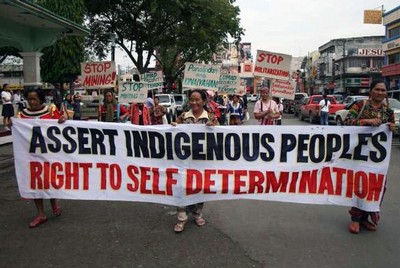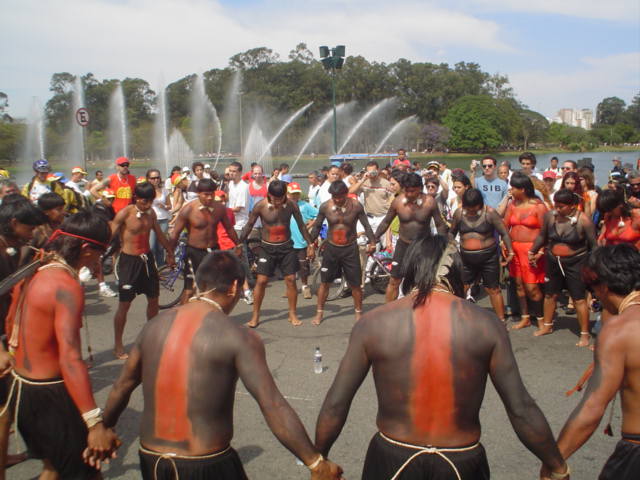This past weekend was the only international film festival on water, worldwide—Voices from the Water, held in Bangalore in several different locations. Working for a water NGO, I made my schedule free to catch up on some of these movies, to understand what the current issues are and what the film circle is capturing through their lens that we don’t necessarily see from our biased eyes.
With an open mind and no expectation, I selected a few flicks t o see—all related to Indigenous rights in South America. I did see the parallel between the struggle for water for those that needed it the most, but was keen to learn more. A few facts lingered in my mind about the indigenous populations all over the world: 1. They have a deep respect for the land, for nature, for mother earth and father water 2. For centuries, they have been marginalized by many different interest groups 3. They are decreasing in numbers, as their cultures are dying out due to migration to the cities and poverty, including poor healthcare and lack of education infrastructure. So what did these three movies teach me additionally about water and the indigenous struggle? Well for starters, it made me question who really does own the water?—rivers, lakes, streams. In Owners of the Water: Conflict & Collaboration Over Rivers a 34 minute documentary on the Xavante and Wayuu tribe of Brazil, the Xavante tribe held a peaceful protest across a major thoroughfare to bring to light the upstream pollution of the river they depend on. No one was allowed to cross as the tribesmen and women sang and danced, engaging in traditional log races and held banners announcing “save the savannah”. Almost a plea, they repeated, “this is an indigenous movement”. They have always respected the rivers and the life it has given them, so who had the right to pollute their water source with agri-toxins from soy cultivation plants, without any warning?
o see—all related to Indigenous rights in South America. I did see the parallel between the struggle for water for those that needed it the most, but was keen to learn more. A few facts lingered in my mind about the indigenous populations all over the world: 1. They have a deep respect for the land, for nature, for mother earth and father water 2. For centuries, they have been marginalized by many different interest groups 3. They are decreasing in numbers, as their cultures are dying out due to migration to the cities and poverty, including poor healthcare and lack of education infrastructure. So what did these three movies teach me additionally about water and the indigenous struggle? Well for starters, it made me question who really does own the water?—rivers, lakes, streams. In Owners of the Water: Conflict & Collaboration Over Rivers a 34 minute documentary on the Xavante and Wayuu tribe of Brazil, the Xavante tribe held a peaceful protest across a major thoroughfare to bring to light the upstream pollution of the river they depend on. No one was allowed to cross as the tribesmen and women sang and danced, engaging in traditional log races and held banners announcing “save the savannah”. Almost a plea, they repeated, “this is an indigenous movement”. They have always respected the rivers and the life it has given them, so who had the right to pollute their water source with agri-toxins from soy cultivation plants, without any warning?
A bit more direct on ownership, the next film, Life for Sale, was an exploration of water rights in Chile. Pinochet’s policies left the country with privatized water and the Water Code, the development of water markets and tradable water permits, including ads in the paper for shares of water. What has resulted though, is that the largest purchaser of water rights and destroyer of water sources, are copper mining companies, who have sucked groundwater leaving desert communities into bare bones—literally. Without any water to feed their fields, desert communities immigrated to the cities, leaving thriving towns into dusty enclaves. And I don’t know what’s worse—to have your water supply stripped from you illegally, or stripped from you legally. Now, Chile has the most expensive water, where people have resorted to drinking desalinated water because there is no available water otherwise.
The second thing these films made me realize was despite how battered and gentrified the Indigenous communities have been, their belief in their traditions and ways have created some of the strongest bonds of any societal group that could have existed. This fact was evidenced in the final film, Voice of the Mapuche, a holistic look at the Mapuche tribes of Chile and Argentina, who have fought corporations and terrorism accusations, amongst many things. Having been so frustrated with years of marginalization, they have come back, with stronger numbers, with the young and the old, and with a community led regrowth and rebuilding of their heritage. Less about water, and more on the social justice angle, the nearly 2 hour movie showed an in depth view of how tribal communities use their circular view of humans and earth and brotherhood to reclaim what was rightfully theirs---land and dignity. And what was very prevalent in this movie, a sense of brotherhood, was also prevalent in the other two movies as well.
By the time the three movies were complete, I had felt a bit lacking, not only asking why there was not more of a focus or a teaching of how these tribes respected water, but also personally, wondering why I had never joined a n indigenous people’s protest, knowing all this was going on.
n indigenous people’s protest, knowing all this was going on.
Finally, I think the overarching learning here was that the struggle the Xavante, the Wayuu, the Mapuche, or any indigenous community was facing is a common struggle. Whether it is a tribe in Orissa, or a tribe in Argentina, people are fighting mining conglomerates, fighting industrial pollution, and fighting the stripping of their lands, their livelihoods. And this concept of a common struggle, is definitely a theme that can get us, the rest of us, moving. Educating each other about a common struggle, a common voice, is a gift that we can give just by sharing. Because sharing and educating lead to action. Then maybe we can get to a place where we value humanity over profit. After all, as a Xavante leader said, “We are brothers. We share the same blood.”
Image Credits: Friends of the Earth International